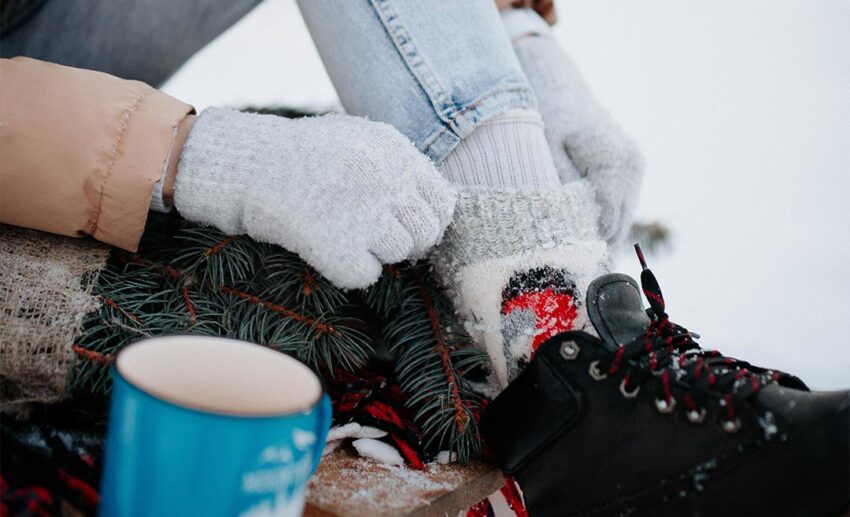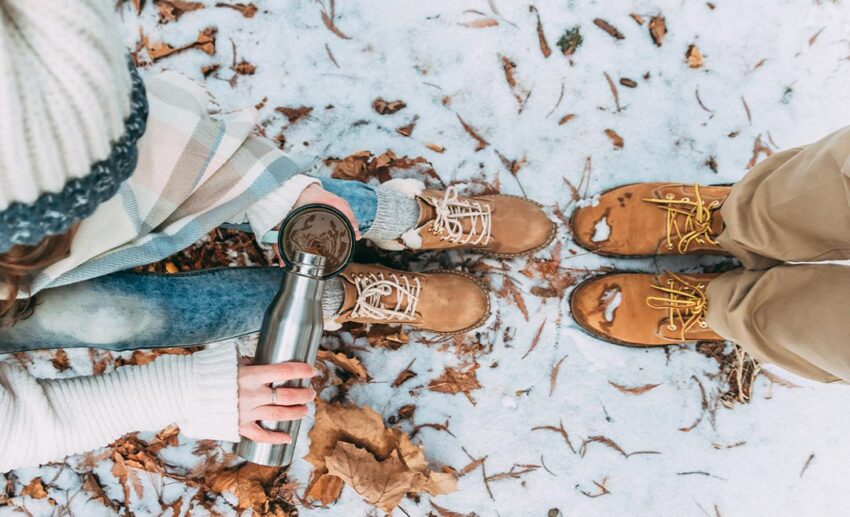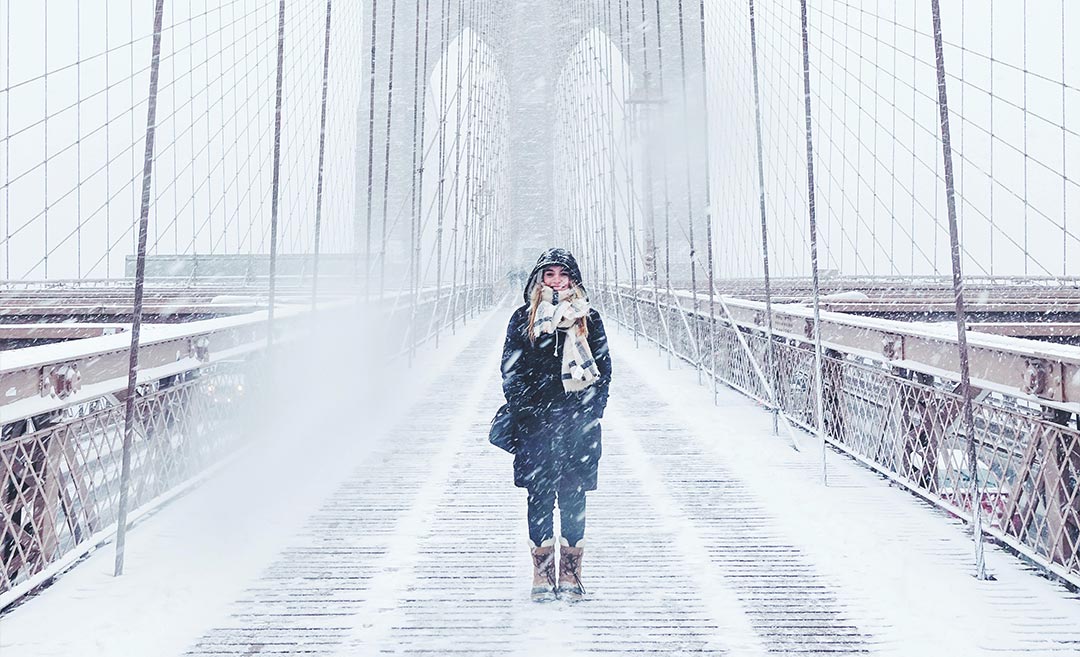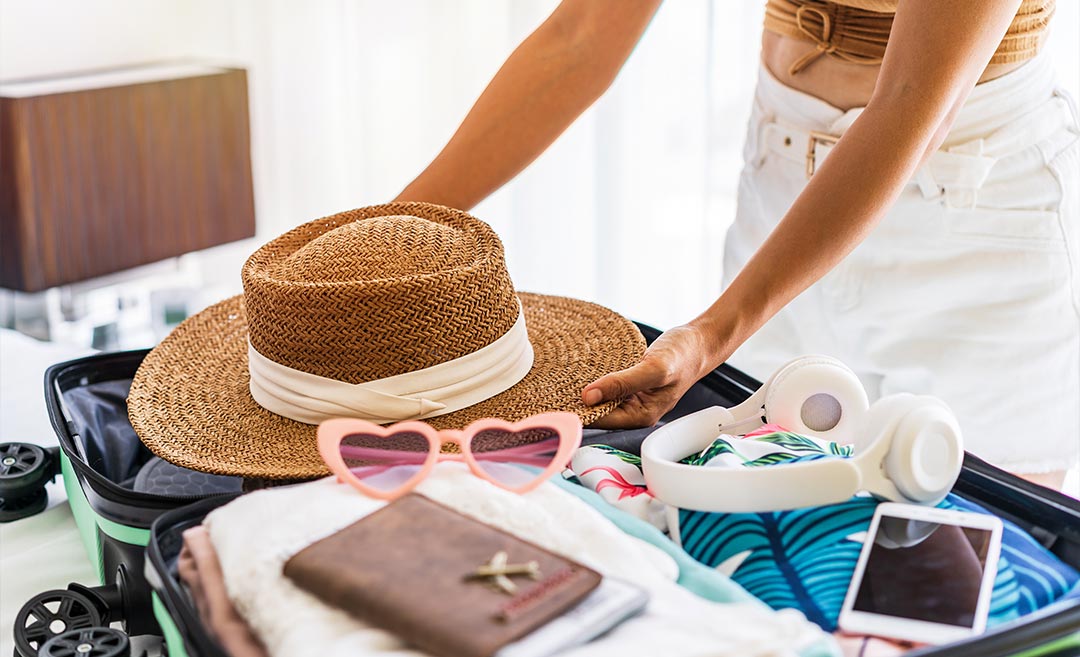Are you gearing up for a winter getaway to experience a magical snowy escape? Whether you are set for a thrilling ski expedition or a scenic city break, you’ll need to pack the appropriate clothing to ensure you are well-equipped for the frosty air.
Here is a guide to ensure that your winter adventures are defined by cosy moments and cherished memories by mastering the art of packing for the cold.
It’s all about layering

The thickness of your clothing doesn’t matter as it all lies in layering the right clothing under your jacket. Start with the most essential base – a thermal underlay. Don’t skip this step, as a thermal undergarment helps to trap your body heat close to your skin.
Next, wear your preferred clothing over the thermal wear. If the weather is below freezing, adding another layer of a down jacket, warm fleece, or a vest on top of your preferred clothing is advisable before wearing a final outer coat.
All these layers will save you from shivering in the cold and you can focus on enjoying the magic of winter instead. However, layering can make packing a hassle, so be sure to pack versatile clothing that can be worn differently to avoid an overpacking disaster!
Packing tip: Helium down jackets are an excellent choice as they are lightweight, water- and wind-resistant, which will help protect you from the cold longer.
Choose the right thermal undergarment
Think of thermal underlayers as your ‘second skin’ that keeps you warm throughout the day – a true lifesaver in cold weather! These thermal undergarments serve as the foundation of your winter attire. Besides the extra layer of warmth, it helps to retain any sweat. When purchasing good thermal tops and bottoms, prioritise breathable material designed to wick away moisture, keeping you dry and warm.
For a thermal undergarment to work effectively, it needs to be a ‘next-to-your-skin’ fit. Make sure to choose a size that fits just right and is not too loose. If your thermal undergarment is loose, it compromises the garment’s ability to perform effectively, defeating the purpose of wearing it in the first place.
Invest in good quality socks

Warm feet make all the difference in cold weather. A cold and damp foot can quickly sour your exploration. It is crucial to opt for high-quality socks during the winter, particularly those made from Merino wool.
Merino wool socks are the best material to keep your feet warm without the added bulkiness. It is lightweight, naturally odour-resistant, and effectively insulates your feet. These socks will be your best investment against the biting cold!
Pack the right outer jacket
Depending on your winter destination, packing the right outerwear can significantly impact your comfort in surviving the cold. If you are travelling to a sub-zero destination, opt for a longer mid-length waterproof down coat. Longer coats not only provide better shields against freezing temperatures but are also a barrier against icy drafts that might seep in, keeping your body snuggly and warm.
When gearing up for a ski adventure, versatile 3-in-1 ski jackets with adequate waterproofing and insulation are popular for milder conditions. However, if the winter destination is expected to experience heavy snowfall, pack along a hard-shell jacket for its durability and higher level of waterproofness.
Hard-shell jackets are also excellent hiking companions, as the thin layer allows convenient adjustment of the layers underneath according to the temperature.
Get multi-purpose boots

Winter boots can be bulky, making packing plenty during your trip difficult. However, having just one pair of winter boots may only be ideal for some activities, as you might need different shoes for sightseeing versus hiking.
If you’re planning on packing light for your winter trip, the best versatile winter boots to bring are ankle boots that balance comfort, style, and waterproof functionality to complement various outfits. If you are planning an outdoor adventure, pack an additional set of heavy-duty boots tailored explicitly for the outdoors.
A comfortable and waterproof boot is non-negotiable when it comes to cold destinations. Keeping your feet dry and insulated will ensure you stay warm while outdoors.
Packing tip for long boots: Avoid folding the boots in the suitcase as it might create a permanent wrinkle. Instead, stuff clothing inside the boots and wrap soft items around them.
Don’t forget the warm accessories

In addition to packing warm clothes and winter boots, don’t overlook the significance of warm accessories such as hats, gloves, and scarves. These are vital for warmth and style, adding a pop of colour to complete your winter look.
Never go out without gloves, and bring an extra pair just in case one magically disappears or gets wet. When purchasing gloves, find a pair that fits your hands perfectly with enough room for movement. If a glove is too big it will not insulate your hands well.
Earmuffs are a great alternative to hats if you prefer to avoid hat hair. Keeping your ears warm is as important as keeping your hands and feet warm!
How to efficiently pack bulky winter clothes
The most fussy part about packing for cold weather is the amount of space it takes up, as winter clothes are bulky and heavy. However, clever strategies like compression bags or packing cubes can work wonders in optimising suitcase space while keeping your clothing organised.
If space is limited, mix and match your outfits to maximise outfit versatility and reduce the need to pack numerous outfit options. This saves space and ensures practicality without compromising on style during your winter getaway.
TLDR: Must-haves in your winter packing list
Here are the essential clothing items to add to your winter packing list:
- Thermal undergarments: Long-sleeve top and leggings
- Lightweight down jacket
- Versatile fitted sweaters: Wool, cotton, or cashmere
- Versatile pants and skirts
- Wool scarf
- Wool-blend beanie and gloves
- Earmuffs
- Thick wool socks
- Water-resistant boots
- Warm coat or jacket




